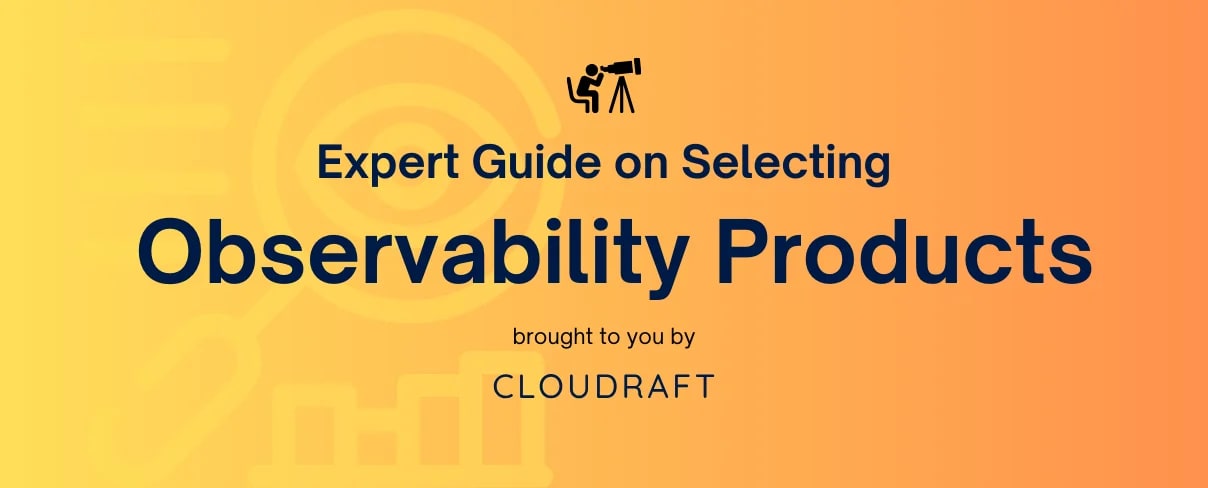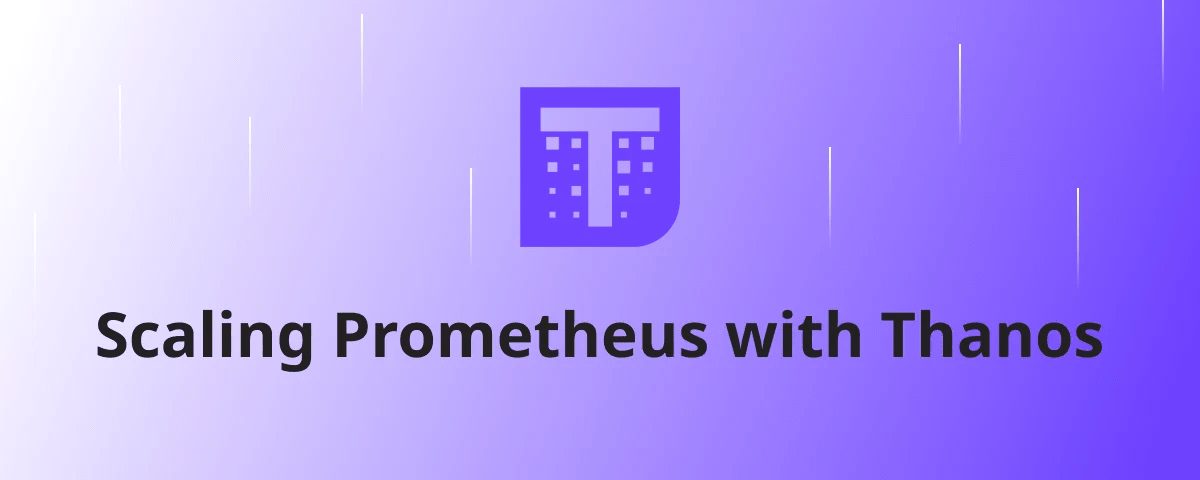Guide to select Observability tools and products
In today's digital landscape, businesses are constantly striving to stay ahead of the curve. The ability to deliver exceptional customer experiences, maintain system reliability, and optimize performance has become a crucial differentiator. Enter observability – the linchpin of modern IT operations that empowers organizations to achieve operational excellence, drive cost-efficiency, and continuously enhance their services.
The rise of cloud-native architectures has revolutionized the way applications are built and deployed. These modern systems leverage dynamic, virtualized infrastructure to provide unparalleled flexibility and automation. By enabling on-demand scaling and global accessibility, cloud-native approaches have become a catalyst for innovation and agility in the business world.
However, this shift brings new challenges. Unlike traditional monolithic systems, cloud-native applications are composed of numerous microservices distributed across various teams, platforms, and geographic locations. This decentralized nature makes it increasingly complex to monitor and maintain system health effectively.
In this article, we'll explore the essential characteristics of a robust observability solution and provide guidance on selecting the right tools to meet your organization's unique needs.
Evolution in Observability Space
The evolution of observability over the last two decades has been characterized by significant technological advancements and changing industry needs. Let's explore this journey in more detail:
In the early 2000s, observability faced its first major challenge with the explosion of log data. Organizations struggled with a lack of comprehensive solutions for instrumenting, generating, collecting, and visualizing this information. This gap in the market led to the rise of Splunk, which quickly became a dominant player by offering robust log management capabilities. As the decade progressed, the rapid growth of internet-based services and distributed systems introduced new complexities. This shift necessitated more sophisticated Application Performance Management (APM) solutions, paving the way for industry leaders like DynaTrace, New Relic, and AppDynamics to emerge and address these evolving needs.
The dawn of the 2010s brought about a paradigm shift with the advent of microservices architecture and cloud computing. These technologies dramatically increased the complexity of IT environments, creating a demand for observability solutions that prioritized developer experience. This wave saw the birth of innovative platforms such as DataDog, Grafana, Sentry, and Prometheus, each offering unique approaches to monitoring and visualizing system performance. As we moved into the latter half of the decade, the industry faced a new challenge: skyrocketing observability costs due to the massive ingestion of Metrics, Events, Logs, and Traces (MELT). While monitoring capabilities had greatly improved, debugging remained a largely manual and time-consuming process, especially in the face of increasingly complex Kubernetes and serverless architectures. Some products like Datadog, Grafana, SigNoz, KloudMate, Honeycomb, Kloudfuse, Thanos, Coroot, and VictoriaMetrics tackled these new challenges head-on.
The early to mid-2020s have ushered in a new era of observability, characterized by innovative approaches to data storage and analysis. Industry standards like OpenTelemetry have gained widespread adoption, and products are now aligning with this standard. To optimize costs, observability pipelines are being used to filter and route data to various backends, automatically handling high cardinality data that was often a pain point at scale. We've also seen the adoption of high-performance databases like ClickHouse for monitoring purposes, often becoming the backend of choice for observability products. The emergence of eBPF technology has provided deep insights into system performance and inter-entity relationships. Due to the increased adoption of the Rust programming language for its high performance, some observability tools such as Vector and various agents have become lightweight and more efficient, allowing for further scalability. Products like Quickwit (see how Binance is storing 100PB logs) have introduced cost-effective and scalable solutions for storing logs and metrics directly on object storage. Perhaps most significantly, we're witnessing the integration of artificial intelligence into observability tools, enabling causal analysis and faster problem resolution. This AI-driven approach is helping organizations quickly narrow down issues in their increasingly complex environments, marking a new frontier in the observability landscape.
Systems are getting Complex
In the realm of modern, distributed systems, traditional monitoring approaches fall short. These conventional methods rely on predetermined failure scenarios, which prove inadequate when dealing with the intricate, interconnected nature of today's cloud-based architectures. The unpredictability of these complex systems demands a more sophisticated approach to observability.
Enter the new generation of cloud monitoring tools. These advanced solutions are designed to navigate the labyrinth of distributed systems, drawing connections between seemingly disparate data points without the need for explicit configuration. Their power lies in their ability to uncover hidden issues and correlate information across various contexts, providing a holistic view of system health.
Consider this scenario: a user reports an error in a mobile application. In a world of microservices, pinpointing the root cause can be like finding a needle in a haystack. However, with these cutting-edge monitoring tools, engineers can swiftly trace the issue back to its origin, even if it's buried deep within one of countless backend services. This capability not only accelerates root cause analysis but also significantly reduces mean time to resolution (MTTR).
But the benefits don't stop at troubleshooting. These tools can play a crucial role in refining deployment strategies. By providing real-time feedback on new rollouts, they enable more sophisticated deployment techniques such as canary releases or blue-green deployments. This proactive approach allows for automatic rollbacks of problematic changes, mitigating potential issues before they impact end-users.
As the cloud-native landscape continues to evolve, selecting the right monitoring stack becomes paramount. To maximize the benefits of modern observability, it's crucial to choose a solution that not only meets your current needs but also aligns with your future goals and the ever-changing demands of cloud-based architectures.
Essential Features of Robust Observability Solutions
In today's complex digital landscapes, selecting the right observability tools is crucial. Let's explore the key attributes that make an observability solution truly effective that aligns with the observability best practices.
Holistic Monitoring Capabilities
A comprehensive observability platform should adeptly handle the four pillars of telemetry data, collectively known as MELT:
- Metrics: Quantitative indicators of system health, such as CPU utilization
- Events: Significant system occurrences or state changes
- Logs: Detailed records of system activities and operations
- Traces: Request pathways through the system, illuminating performance bottlenecks
An ideal solution seamlessly integrates these data types, providing a cohesive view of your system's health.
Intelligent Data Analysis and Anomaly Detection
Modern systems often exhibit unpredictable behavior patterns, rendering static alert thresholds ineffective. Advanced observability tools employ machine learning to detect anomalies without explicit configuration, while still allowing for customization. By correlating anomalies across various telemetry types, these systems can perform automated root cause analysis, significantly reducing troubleshooting time.
Sophisticated Alerting and Incident Management
Real-time alerting is the backbone of effective observability. A top-tier solution should:
- Alert on both customizable thresholds and AI-detected anomalies
- Consolidate related alerts into actionable incidents
- Enrich incidents with contextual data, runbooks, and team information
- Intelligently route incidents to appropriate personnel
- Trigger automated remediation workflows when applicable
To combat alert fatigue, the system should employ intelligent alert suppression, prioritization, and escalation mechanisms.
Data-Driven Insights
Analytics derived from telemetry data drive continuous improvement. Key metrics to track include Mean Time to Repair (MTTR), Mean Time to Acknowledge (MTTA), and various Service Level Objectives (SLOs). These insights facilitate post-incident analysis, helping teams prevent future issues and optimize system performance.
Extensive Integration Ecosystem
A versatile observability solution should seamlessly integrate with your entire tech stack:
- Popular programming languages and frameworks
- Open-source standards (OpenTelemetry, OpenMetrics, StatsD)
- Container orchestration platforms (Docker, Kubernetes)
- Security tools for vulnerability scanning
- Incident management systems
- CI/CD pipelines
- Major cloud platforms
- Team collaboration tools
- Business intelligence platforms
Scalability and Cost Optimization
As applications grow in scale and complexity, managing observability costs becomes challenging. Look for tools that:
- Identify underutilized resources and forecast future needs
- Employ intelligent data sampling and retention policies
- Efficiently handle high-cardinality data
- Utilize cutting-edge technologies like eBPF for improved performance
Intuitive User Experience
An observability platform's UI/UX is critical for efficient debugging and insight gathering. Seek solutions offering:
- Clear visualizations of system components and their relationships
- Pre-configured dashboards for common scenarios
- Easy integration with your existing stack
- Comprehensive, user-friendly documentation
- Ability to slice and dice visualizations and fast response time
Operational Simplicity
Scaling observability across an organization can be daunting. Look for platforms that:
- Support "everything-as-code" for standardization and version control
- Integrate smoothly with modern application platforms
- Offer automation-friendly interfaces
- Provide tools for managing observability at scale
Cost-Effective Data Management
As data volumes grow, intelligent data lifecycle management becomes crucial. Seek solutions offering:
- Multi-tiered storage for different data types
- Advanced compression and deduplication techniques
- Intelligent data sampling strategies
- Efficient handling of high-cardinality data
Alignment with Industry Standards
Choosing tools that support industry-standard protocols and frameworks (like OpenTelemetry, PromQL, and Grafana) ensures:
- Easier integration with existing systems
- Vendor-independent implementations
- Flexibility to change backends without code modifications
Organizational Fit
When selecting an observability solution, consider your organization's unique needs:
- System complexity and scale
- User base characteristics
- Budget constraints
- Team skills and expertise
Prioritize platforms that cover your full stack, tying surface-level symptoms to root causes. Ensure the chosen solution integrates seamlessly with your current tech stack, DevSecOps processes, and team workflows. The ideal observability solution balances comprehensive insights with practical considerations, providing a powerful yet feasible tool for your organization's needs. Ideally, you want one or a few tools that are as effective as possible to justify their costs; you also want to avoid context switching. Let’s look at the key features of an effective application monitoring tool.
Conclusion
Selecting the ideal observability solution is a nuanced process that demands a deep understanding of your organization's unique ecosystem. It's not just about collecting data; it's about gaining actionable insights that drive meaningful improvements in your systems and processes.
The journey to effective observability requires a careful balance between comprehensive coverage and practical implementation. Your chosen solution should seamlessly integrate with your existing tech stack, enhancing rather than disrupting your current workflows. It's crucial to find a tool that not only provides rich, full-stack visibility but also aligns with your team's skills, your budget constraints, and your overall operational goals.
Remember, observability is a double-edged sword. When implemented effectively, it can provide unprecedented insights into your systems, enabling proactive problem-solving and continuous improvement. However, if not approached thoughtfully, it can lead to unnecessary complexity, spiraling costs, and a false sense of security. The risk of "running half blind" with suboptimal observability practices is real and can have significant implications for your operations and bottom line.
In this complex landscape, partnering with experts can make all the difference. CloudRaft, with its deep expertise in observability and extensive partnerships in the field, stands ready to guide you through this journey. Our experience can help you rapidly adopt and optimize modern observability practices, ensuring you reap the full benefits of these powerful tools without falling into common pitfalls.
By choosing the right observability solution and implementation approach, you're not just collecting data – you're empowering your team with the insights they need to drive innovation, enhance performance, and deliver exceptional user experiences. In today's fast-paced digital environment, that's not just an advantage – it's a necessity.
Authors:
- Anjul Sahu: Anjul is a leading expert in observability and a thought leader. In the last one and half decades, he has seen all the waves, of how observability and monitoring have evolved in large-scale organizations such as Telcos, Banks, and Internet Startups. He also works with investors and product companies looking for advice on the current trends in observability.
- Madhukar Mishra: Madhukar has over one decade of experience, building up the platform for a leading e-commerce company in India to a company that built Internet-scale products. He is interested in large-scale distributed systems and is a thought leader in developer productivity and SRE.
Is Your Observability Strategy Truly Delivering?
Unlock the full potential of your systems with our expert observability consulting. We'll help you slash costs, supercharge performance, and achieve unparalleled operational excellence. Our battle-tested approaches have saved clients millions and transformed their operations. Curious how you measure up?




